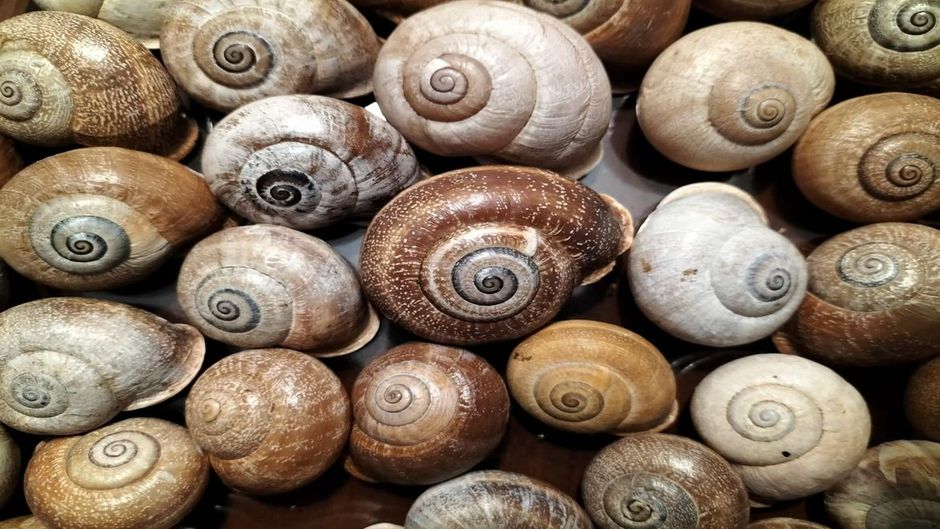Up to now, no one had any idea why only one in a million snails rolled its shell to the left.
 Photo: Antonio Cruz.
Photo: Antonio Cruz.
For many years zoologists have known that there are right snails and left snails. This has nothing to do with politics! It’s rather about the direction in which the spiral on their shell is oriented.
In the case of the vast majority the direction is clockwise (dextrorotatory), whereas the number of those whose direction is anti-clockwise (laevorotary) is astonishingly small, a fact which has always occupied the minds of malacologists and zoologists specialising in these molluscs.
Up to now, no one had any idea why only one in a million snails are laevorotary, in contrast with all other members of the same species. Of course this feature is a problem for those snails that possess it, as it prevents them from reproducing.
As the disposition of their internal organs are also the other way round, their genital orifices do not coincide, so laevorotary snails can only mate and reproduce with other laevorotary snails.
But the probability of finding a mate out of a million other snails is vanishingly small, especially if they are hermaphrodite.
Such a find, almost impossible for a snail, was incredibly made by my brother Alfonso. He found the shell of a white laevorotary snail of the Iberus gualtieranus alonensis species near the town of Pitareque, in Teruel. He contacted me immediately and I was able to take the following photograph.

In 2016, an international team of scientists led by the geneticist Angus Davidson of Nottingham University, published a paper in the magazine Current Biology, in which he explained that an incapacitating mutation in a snail gene was responsible for the change in direction in the shell of these specimens. 1
This is a gene which codifies or synthesises proteins known as formines, and in which the change of a single letter (or nitrogenous base) of the DNA, inside the newly fertilised egg of only two or four cells is enough to alter the direction of the shell, and thus produce a left-oriented snail.
It is therefore a copying erroring the formation of this gene of the formine.
Davison found a living laevorotary snail, a member of the Cornu aspersum species, highly appreciated in Mediterranean gastronomy, to which they gave the name “Jeremy”.
This is a very common species in Europe, where it originated, but it was also introduced in America and constituted a plague for crops growing there.
A worldwide call was launched to find out whether anyone else had a living example of a laevorotary snail, with the aim of getting them to mate and have progeny, for the purpose of future research.
Two specimens with this mutation were made available. One of them, named “Lefty”, belonged to a collector in Suffolk, England, and the other, to which they gave the name “Tomeu”, was from a Mallorcan restaurant.
However, Jeremy did not mate with either of these two new arrivals, but the latter did mate with each other. And they had many offspring.
It is common knowledge that snails are hermaphrodites. That is to say, each specimen has both sperm and eggs. But what a snail cannot do is fertilise its own eggs.
Therefore they carry out cross-fertilisation. The sperm from one specimen fertilises the other’s eggs, and vice versa. In this way, Lefty and Tomeu laid a large number of eggs, from which some 170 little snails were born.
However, to the great disappointment of the researchers, all of them were normal. That is to say, they were dextrorotary. The team considered that in subsequent future crosses, more laevorotary specimens might appear.

In the year 2021, the first laevorotary snail was born under laboratory conditions, from progenitors that were also laevorotary.
This confirmed that these left-oriented snails donot emerge by accident from embryonic development but as a result of the alteration or mutation of a gene that causes all the organs to be the other way round.
Dr Angus Davison and his team are working on the identification of this snail gene, and harbour the hope that it might also be present in humans.
If so, they say, the study of this gene could contribute to understanding the asymmetry of our own bodies.
According to evolutionists, the asymmetry of the human body might have originated in genes that are similar to those that produce asymmetry in snails. 2
That is to say, a hypothetical random mutation in an ancient gene of some species of mollusc could account for why some of us have a liver on the right and a spleen, pancreas or stomach towards the left of our bodies.
Although the vast majority of the genetic mutations are harmful for the individual in whom they occur, Darwinism presupposes that the evolution of all living beings depends on a handful of beneficial mutations.
Hence the constant effort to find examples of such mutations which have supposedly given rise to everything. However, it is paradoxical that the sum total of errors in the transmission of DNA education have generated so many extraordinary and intelligent solutions.
1. Davison, A. et al., 2016, Formin Is Associated with Left-Right Asymmetry in the Pond Snail and the Frog, Current Biology, Volume 26, Issue 5, Pages 654-660.
2. https://www.investigacionyciencia.es/noticias/rarezas-y-cuitas-de-un-caracol-o-el-origen-gentico-de-la-asimetra-corporal-15298

Las opiniones vertidas por nuestros colaboradores se realizan a nivel personal, pudiendo coincidir o no con la postura de la dirección de Protestante Digital.
Si quieres comentar o